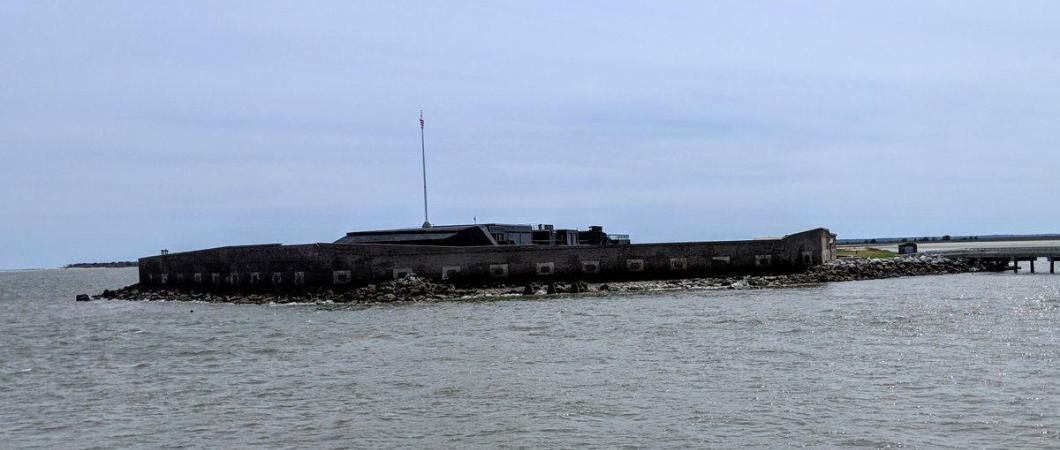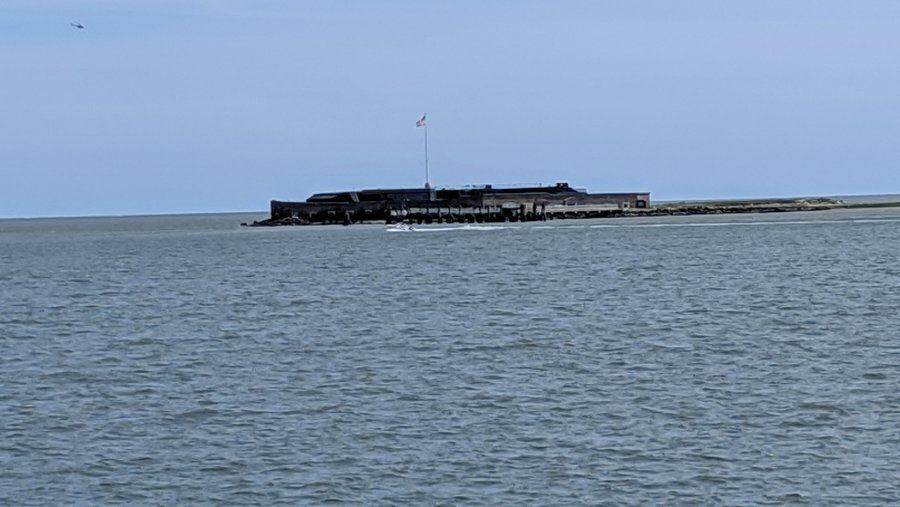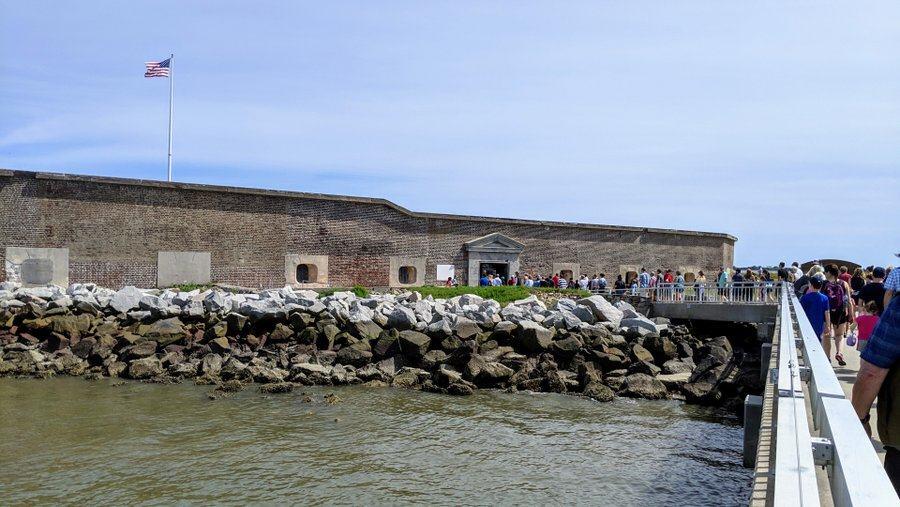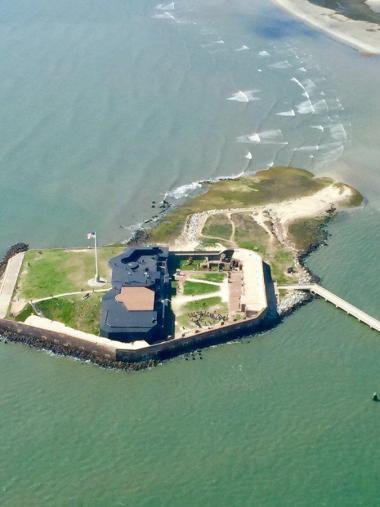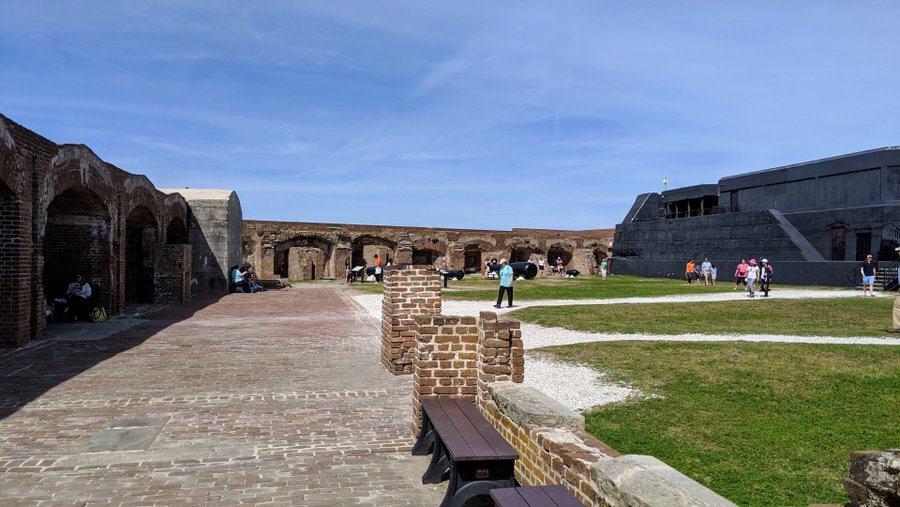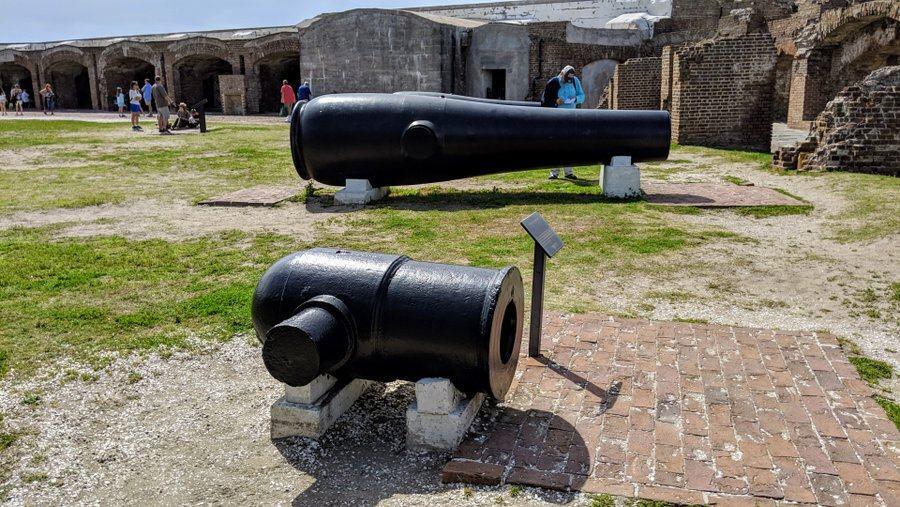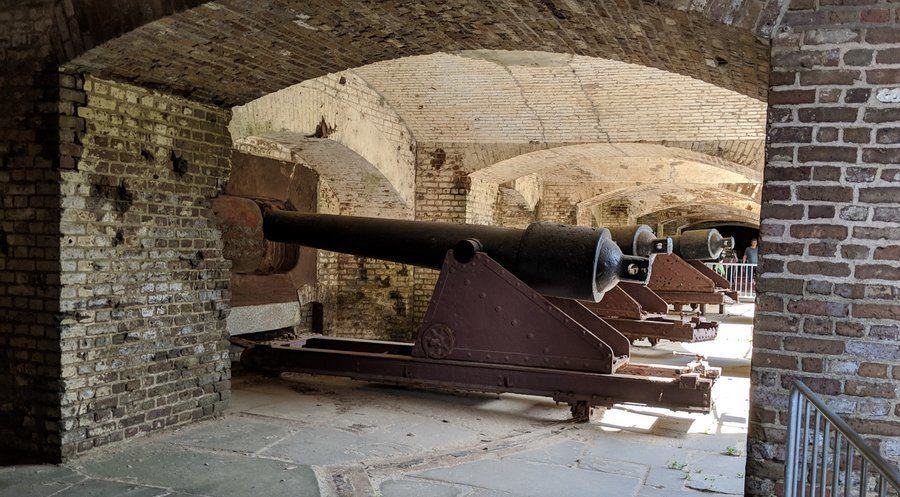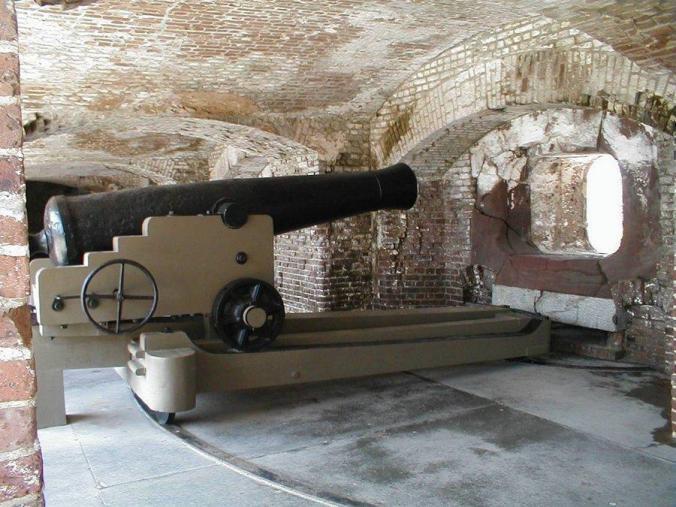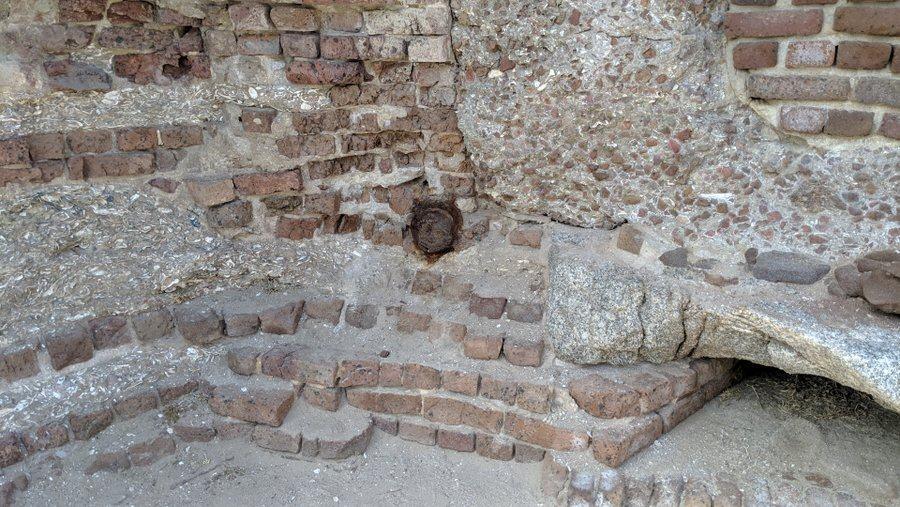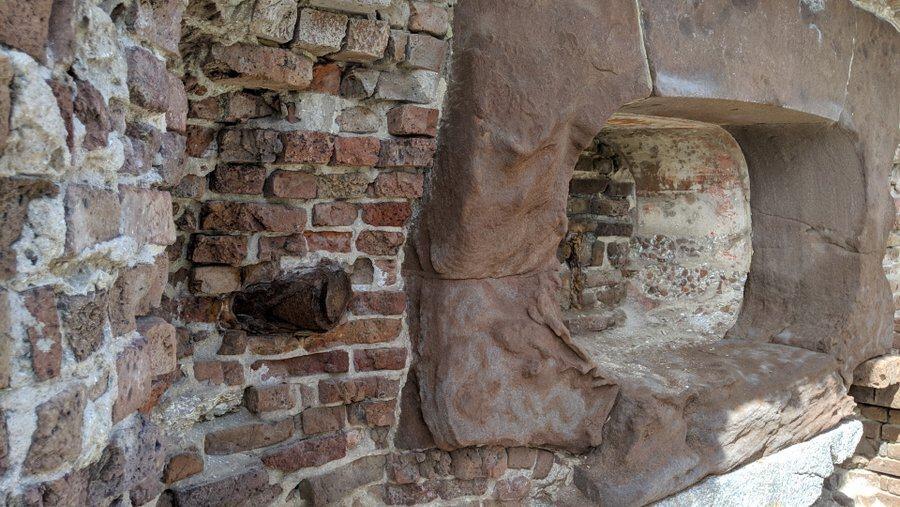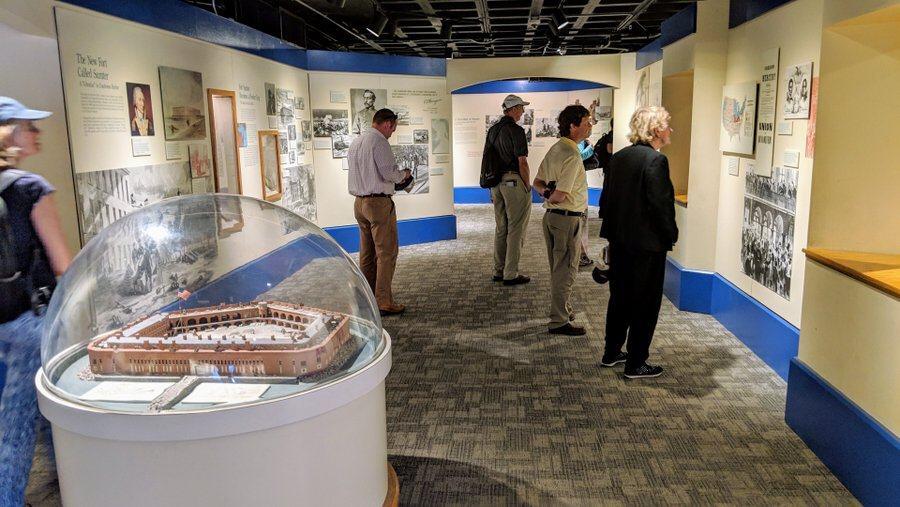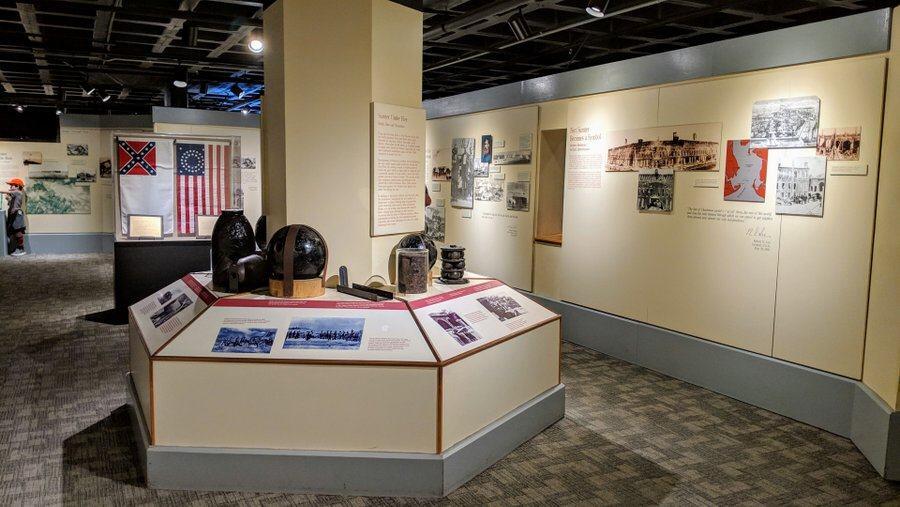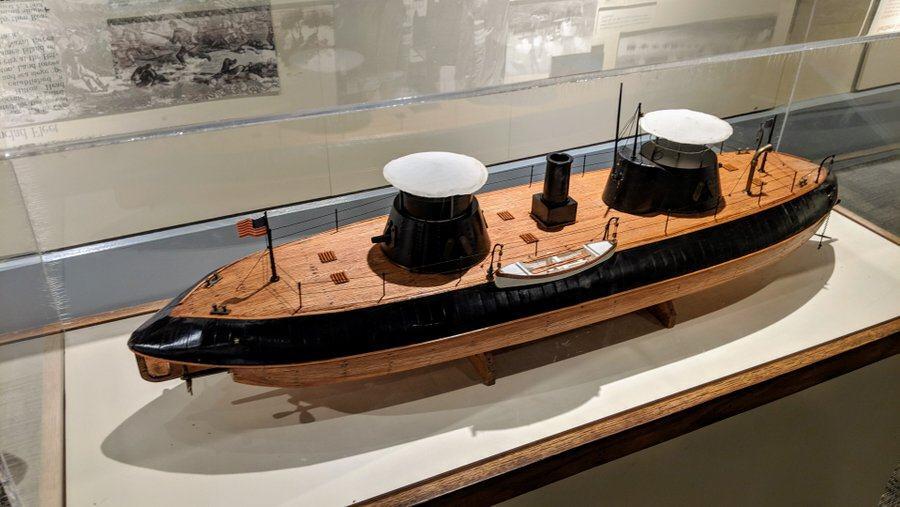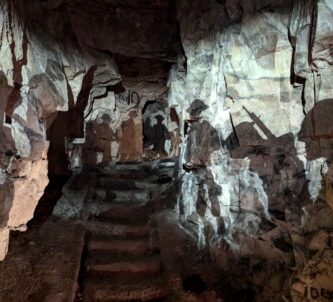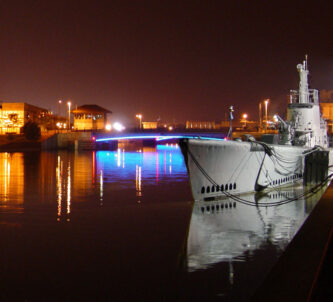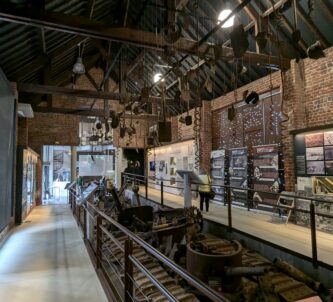Fort Sumter at the entrance to Charleston harbour has had a lot thrown at it over the centuries. Hurricane Dorian, earlier this month, was just the latest assailant to threaten the 190 year old island fortress*.
The opening shots of the American Civil War were fired at Fort Sumter, which is why it is a National Monument under the protection and management of the National Park Service, along with its neighbour Fort Moultrie on the northeast bank of the harbour.
The History of Fort Sumter
Work began on Fort Sumter in 1829, almost 50 years after the conclusion of America’s War of Independence, and in the wake of the short-lived War of 1812. It was intended to be part of the nation’s network of fortifications and batteries defending major coastal cities from naval attack. However, when South Carolina seceded from the Union in 1860, the Union’s garrison came under threat from the land, not the sea.
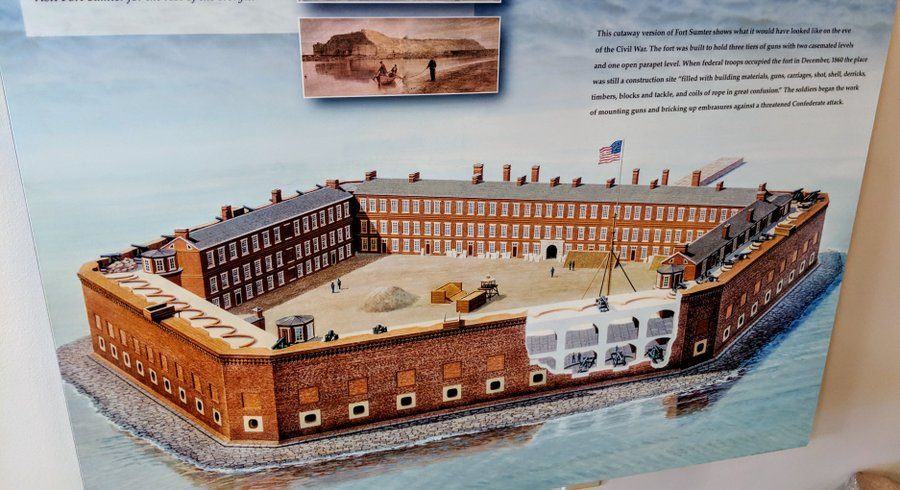
Fort Sumter’s commander, Major Robert Anderson, found himself surrounded by hostile Confederate batteries at Fort Moultrie (NE), Fort Johnson (SW) and Cummins Point (SE). Although the fort was mostly built, it wasn’t yet fully equipped or manned and Anderson appealed for supplies & reinforcements from the President.
Fort Sumter is seen ‘officially’ as the recipient of the first shots of the civil war, but actually the first shots were fired on 9th Jan 1861 at a supply ship by the cadets of The Citadel, a military academy in Charleston, who were manning a battery of cannons out on Cummings Point (Morris Island). The ship was the Union steamer Star of the West on its way to deliver troops to Fort Sumter, but it was forced to retreat.
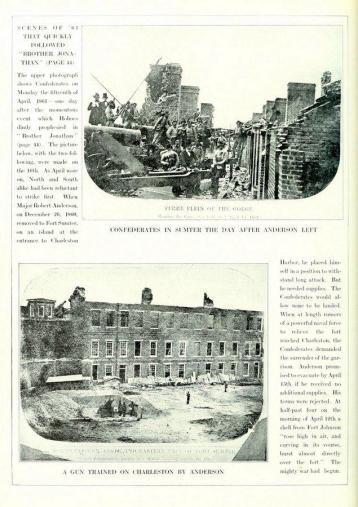
More ships were dispatched but by 11th April 1861, when the first arrived off Charleston harbour, the commander of the local Confederate forces, Brigadier General Beauregard, had already sent officers to Fort Sumter demanding Anderson’s surrender. They did not receive a satisfactory reply and at 0430 the next morning, the Confederate batteries opened fire and continued their bombardment for 34 hours.
Anderson couldn’t do much in response. Not only was he under-manned and with less than half the full complement of guns, he also had no fuses for his shells, so they won’t explode on landing. No surprise then that on Sat 13th the garrison surrendered.
Now Fort Sumter was in Confederate hands, and so it remained for two years until the Union returned to re-take Charleston.
In April 1863 they attacked the fort with a force of two ironclads and nine monitors, but were outgunned and beaten off. In September they tried to assault the fort in a badly planned army & navy operation which failed completely.
Fort Sumter’s Confederate garrison went on to endure two years of bombardment from the sea and land, reducing the fort to rubble. Eventually, in February 1865, with South Carolina overrun, the Confederate forces were forced to abandon Charleston and Fort Sumter.
After the Civil War the fort was partially rebuilt with lower walls and used only as a lighthouse. At the end of the 19th century the short lived Spanish–American War (3 months) prompted renewed interest in its fortification and a huge concrete blockhouse was built to house two 12-inch guns, but the fort never saw action again. During WW1 & WW2 it guarded Charleston with searchlights and 90mm guns. In 1947 the guns were decommissioned and the fort was handed over to the National Park Service.
Visiting Fort Sumter
The National Park Service operate a ferry out to Fort Sumter from downtown Charleston where they have a dock and a visitor centre. The visitor centre has a number of displays to educate and set the historic scene for visitors as they wait for the ferry.
There are typically 3 tours a day from Charleston (two in the winter) and the ferry takes about 30-35 mins to get out to the fort. Visitors get about an hour to explore and ask questions of NPS rangers who are on site, before returning to Charleston. So the round trip is around 2¼ hours.
The entrance to the fort leads you straight into the main courtyard. There are a number of artifacts, particularly cannon and mortars from different sources. The most numerous are the 100-pounder muzzle-loading Parrott guns, but they also have some Columbiad cannon including a pair of 15″ Rodman variants.
There’s a delicious irony, that at the end of the Civil War the fort was re-armed with Parrott guns, some of which came from Morris Island… so guns which had only a few years before, been shelling Fort Sumter.
Maybe they were responsible for the two shells still deeply embedded in the walls of the fort.
I’d have loved to see the 11″ Dahlgren gun that the garrison managed to salvage from the wreck of the USS Keokuk. The Keokuk was one of those Union ironclads that bombarded the fort in April 1863 and was sunk by return fire in shallow water near Morris Island. Over the next month the garrison worked at night so the Union Navy blockade ships wouldn’t see them salvaging the gun and transporting it back to the fort. I don’t know what happened to that gun. Anyone?
An hour is about the right time span to explore the fort. There is not a great deal to see, but there is a small museum with more artifacts, models and images to help explain the history of the fort.
* In the end, the hurricane skirted Charleston and although waves were high and there was some flooding (as usual) in the city, the strongest wind gust picked up on the fort’s anemometer was 63 knots.
Declaration: I was visiting Charleston for an event (British Guild of Travel Writers Annual General Meeting) hosted by Explore Charleston and South Carolina. Our small group visit to Fort Sumter was complementary.
Factbox
Website:
Fort Sumter is an island. So there are two organisations involved. The National Park Service run it but visitor services (ferry and ticketing) are operated on their behalf by Fort Sumter Tours, and only they can land there. Private boats are not allowed.
Getting there: Fort Sumter Tours operate ferries to the fort from Patriots Point, and the Fort Sumter Visitor Education Center on the Charleston waterfront.
Liberty Square
340 Concord Street
Charleston
SC 29401
Tour Price (From Liberty Square or Patriots Point):
| Adult (Ages 12 – 61) | $23.00 |
| Seniors & Active Military (Ages 62+/Military ID) | $21.00 |
| Child (Ages 4 – 11) | $15.00 |
| Infants aged three & under go free | |
Tour Departures:
| Jan 2 – Feb 28 | 11:00 am, 2:30 pm |
| Mar 1 – Mar 14 | 9:30 am, 12:00 pm & 2:30 pm |
| Mar 15 – Aug 20 & Labor Day Weekend | 9:30 am, 12:00 pm, 2:30 pm & 4:00 pm |
| Aug 21 – Nov 30 | 9:30 am, 12:00 pm, 2:30 pm |
| Dec 1 – Dec 24 | 11:00 am, 2:30 pm |
| Dec 26 – Dec 31 | 9:30 am, 12:00 pm & 2:30 pm |
| Thanksgiving, Dec 25 & Jan 1 | No tours |
| See website for Patriots Point departures | |

